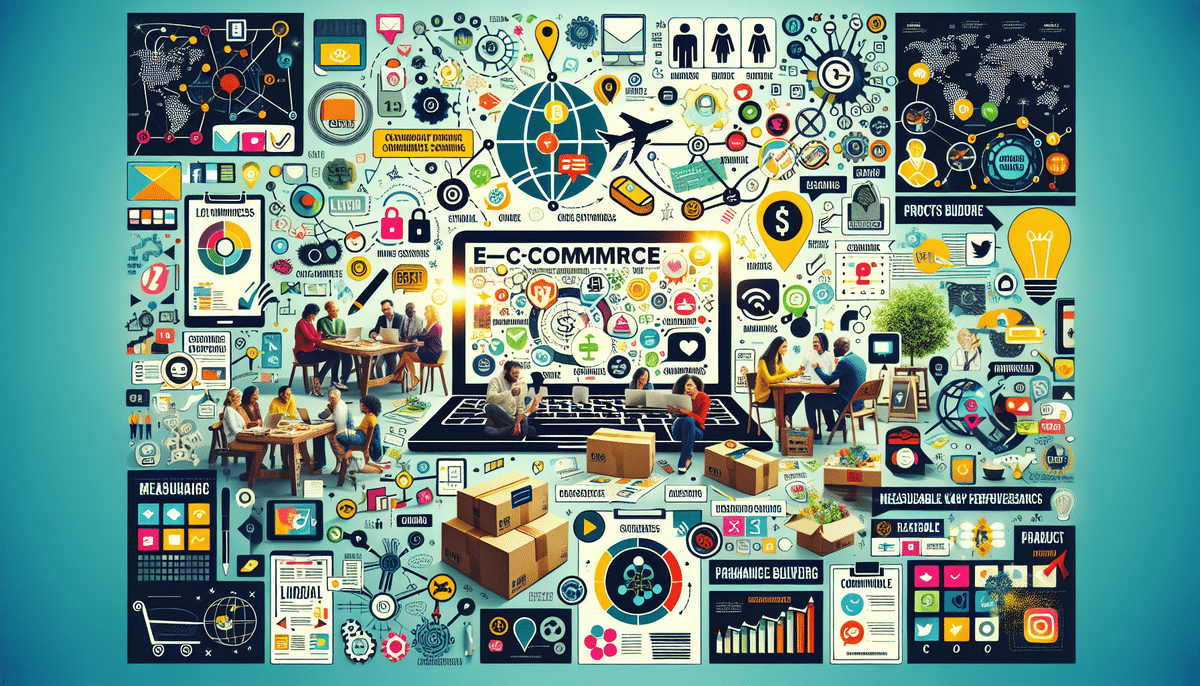Importance of Customer Experience in Retail
In the competitive landscape of retail, delivering an exceptional customer experience is paramount. According to a Forbes report, 86% of buyers are willing to pay more for a better customer experience. A positive customer experience not only fosters loyalty and repeat business but also turns customers into brand advocates, significantly impacting a company's bottom line.
Moreover, in today’s digital age, where consumers have access to a multitude of brands and products, a memorable customer experience serves as a key differentiator. Brands that prioritize customer experience are more likely to retain customers and gain market share, contributing to long-term success and growth.
Understanding Your Customers: Building Buyer Personas
The foundation of a memorable retail experience lies in a deep understanding of your customers. Creating detailed buyer personas helps retailers identify and cater to their target audience's needs and preferences. By analyzing customer demographics, purchasing behavior, and preferences, retailers can craft personalized shopping experiences that resonate on a deeper level.
Data Collection Methods
- Surveys and Feedback Forms
- Social Media Analytics
- Sales Data Analysis
- Customer Interviews
Continuous data collection and analysis ensure that buyer personas remain accurate and reflective of the evolving customer base. Utilizing tools like Qualtrics can aid in gathering comprehensive customer insights.
Key Elements of Memorable Retail Experiences
Visual Merchandising
Effective visual merchandising creates an inviting and cohesive store environment. According to the Retail Dive, well-designed displays can increase sales by up to 30%. Strategic product placement, eye-catching displays, and appealing signage guide customers through the store, enhancing their shopping experience.
Technology Integration
Integrating technology enhances convenience and engagement. Tools such as virtual reality (VR) allow customers to visualize products in their own space, reducing return rates and increasing satisfaction. Interactive displays and mobile checkout options streamline the shopping process, making it more efficient and enjoyable.
- Virtual Reality: Enables virtual try-ons and product simulations.
- Mobile Checkout: Reduces wait times and improves convenience.
- Interactive Displays: Engage customers and provide detailed product information.
Staff Training and Empowerment
Staff are the face of the brand and play a crucial role in shaping customer experiences. Comprehensive training programs ensure that employees are knowledgeable and equipped to assist customers effectively. Empowering staff to make decisions enhances their ability to address customer needs promptly, fostering a positive shopping environment.
Creating a supportive and positive work culture further motivates employees to deliver exceptional service, leading to increased customer satisfaction and loyalty.
Personalization and Customization
Personalization tailors the shopping experience to individual customer preferences, enhancing emotional connections and loyalty. Personalized messaging, product recommendations, and customizable product options create a unique and engaging experience for each customer.
Data-driven personalization strategies allow retailers to anticipate customer needs and preferences. Tools like Salesforce Einstein leverage artificial intelligence to deliver tailored experiences based on customer behavior and data analytics.
Multi-Channel Integration for Seamless Experiences
In an omnichannel retail environment, ensuring a seamless experience across all platforms is essential. Integrating online and offline channels provides customers with consistent and convenient interactions, regardless of how they choose to engage with the brand.
- In-Store Pickup: Offers the convenience of online shopping with the immediacy of in-store pickup.
- Unified Customer Profiles: Ensures consistent personalization across channels.
- Cross-Channel Promotions: Engage customers through synchronized marketing efforts.
Implementing integrated systems like Shopify Plus can help manage multi-channel operations effectively.
Measuring and Improving Customer Satisfaction
Regularly measuring customer satisfaction is vital for continuous improvement. Utilizing feedback mechanisms such as surveys, online reviews, and Net Promoter Score (NPS) helps identify strengths and areas for enhancement.
Actionable Insights
Analyzing feedback data enables retailers to implement targeted improvements. This could involve adjusting store layouts, enhancing product offerings, or refining customer service practices.
Tools like SurveyMonkey and Qualtrics provide robust platforms for collecting and analyzing customer feedback.
Future Trends in Retail Experience Design
The future of retail experience design is shaped by emerging technologies and evolving consumer expectations. Key trends include:
- Augmented Reality (AR): Enhances product visualization and interactive experiences.
- Artificial Intelligence (AI): Drives personalized recommendations and customer service automation.
- Sustainable Practices: Increasing demand for eco-friendly products and ethical business practices.
- Experiential Retail: Focus on creating immersive and memorable in-store experiences.
Staying abreast of these trends and integrating them into the retail strategy can position brands for continued success and customer satisfaction.
Case Studies: Successful Retail Experiences
Examining successful case studies provides valuable insights into effective strategies. For example, Starbucks has mastered creating a “third place” between home and work, fostering community and customer loyalty. Similarly, Lululemon has cultivated a strong sense of community through in-store events and workshops, enhancing customer engagement and brand loyalty.
These examples highlight the importance of creating environments that go beyond mere transactions, focusing instead on building meaningful connections with customers.
Conclusion
Creating memorable retail experiences requires a comprehensive understanding of customer needs, strategic use of technology, effective staff training, and seamless multi-channel integration. By prioritizing personalization, continuous improvement, and staying ahead of industry trends, retailers can differentiate themselves in a crowded market. Building strong emotional connections with customers not only fosters loyalty but also drives sustainable business growth.




















